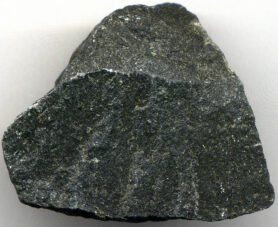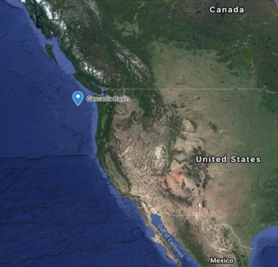Oceans and CO2
Making Large Scale Carbon Storage Viable Under the Ocean
by Michiel van Grootel
You learn a lot from your parents. From mannerisms and behaviors, to how to handle problems, your children learn a lot from you too. My mom taught me to think in solutions, and not problems, and that is an approach that is very important to pass on to our kids. Climate change is happening, and we want to make sure the children of the future, our children, have a good life. To do that we have to look toward the solutions. The people at the Pacific Institute for Climate Solutions (PICS) are doing exactly that. They are looking to take the carbon dioxide (CO2) in our air and put it under the seafloor. PICS wants to do its part against climate change by finding solutions.

Image by Gerd Altmann from Pixabay
The idea of their project is relatively straightforward, we capture CO2 from the air using carbon capture technologies on an ocean platform or ship, which then uses a pump to send this carbon dioxide under the ocean floor. The Solid Carbon Project has found a way to make this concept viable on a large-scale basis and are working hard to take this idea from concept to reality.\
What kind of impact will this have?
In 2019 we emitted over 36 gigatons of CO2 into the atmosphere worldwide. That is 3600 billion kilograms of carbon dioxide. According to the Intergovernmental Panel on Climate Change, this number is still increasing. This project, when fully implemented has the potential to deposit at least half a gigaton per year, if not more. It might not sound like much comparatively, this technology, if we give it enough resources, has a strong potential to exceed this half-a-gigaton baseline. When this is combined with other ideas, we could be removing over 5-10% of our annual emissions. To do this, PICS, led by Sybil Seitzinger will be sending carbon dioxide down under the ocean.
Why below the ocean? What could be all the way down there?

“Basalt 1” by James St. John is licensed under CC BY 2.0
Beneath the ocean floor is a volcanic rock called basalt, whose qualities are integral to this project. Basalt is the most common rock in the earth’s crust, and its porousness allows it to hold lots of minerals such as calcium, magnesium, and iron. Basalt is found most often in large quantities in places where the earth’s crust exposes itself, such as in the Cascadia Basin off the coast of western Canada.
The minerals in the basalt that was mentioned will happily absorb the carbon dioxide when dissolved in water. These form something called a solid carbonate. If you live in a location with hard water, you can see calcium carbonate build up on your faucets and showers. The white substances that appear over time on the surfaces in your shower are mostly calcium carbonate for example, also known as chalk, or limescale. Your children may even have created this same phenomenon in science class! After the calcium carbonate is formed inside these basalt deposits, it is relatively stable, and can stay in that form for a very long time.

Cascadia basin. A well-researched region west of Canada and the USA | Imagery 2021 NASA
Pumping gigatons of CO2 under the ocean? Will that be safe?
According to Dr. Benjamin Tutolo, a researcher at the University of Calgary, who collaborates with the Solid Carbon Project, says “Even if there were earthquakes or seismic activity in the area, they would be so far removed from where anyone lives, that people would be unaffected.”. In the unlikely event that this gas does escape somehow, the worst that would happen is a small portion of the carbon dioxide will escape back into the atmosphere, causing minimal harm. In some places, when fluids or other things are pumped down into wells or aquifers, it can cause stress on the rock, and when that slips, a manmade earthquake occurs. According to Dr Tutolo, fluids and gasses can spread through the basalt rock with relative ease, and therefore not cause significant stress on the basalt.
Compared to the amount of oil platforms, and enormous ships, a platform such as this will not be as polluting either, because the goal is for it to be run on green energy. The technology to pump down the CO2 is already developed well enough to be reliable, and since there is no petroleum being extracted, these platforms will have a much lower risk of damaging the surrounding waters.
What does this mean for the future?
Currently, the project is raising funds for their pilot project: to have a fully equipped science vessel capable of pumping carbon dioxide into the Cascadia basin basalt. Their aim is to start their pilot before 2025. According to Dr. Tutolo, the team at PICS want to make sure that the pilot project is done properly, by not cutting corners. They are looking to get funding of between 30 and 60 million Canadian dollars (21-42 million Euros). This may seem like a lot but compared to what the globe invests into the oil industry, which receives 13.5 million Canadian dollars (9.5 million Euro) per minute it’s chump change.
What now?
We must keep looking for solutions, and not problems. In doing that, we get projects such as this. Sharing the progress, we have made, and the solutions people are coming up with can give us hope. Through you, your children can learn that we can overcome this hurdle humanity is facing. When we all learn to look and create new solutions, we can curb our emissions and even remove some of the carbon we have already released into the atmosphere. But scientists can’t do this alone, we all need to do our part one way or another, and a fantastic first step is to read and learn about it! If you want to see other solutions about climate change and the oceans, please have a look at our other articles! If you want to learn more about the Solid Carbon Project happening in Canada, please visit their website.

